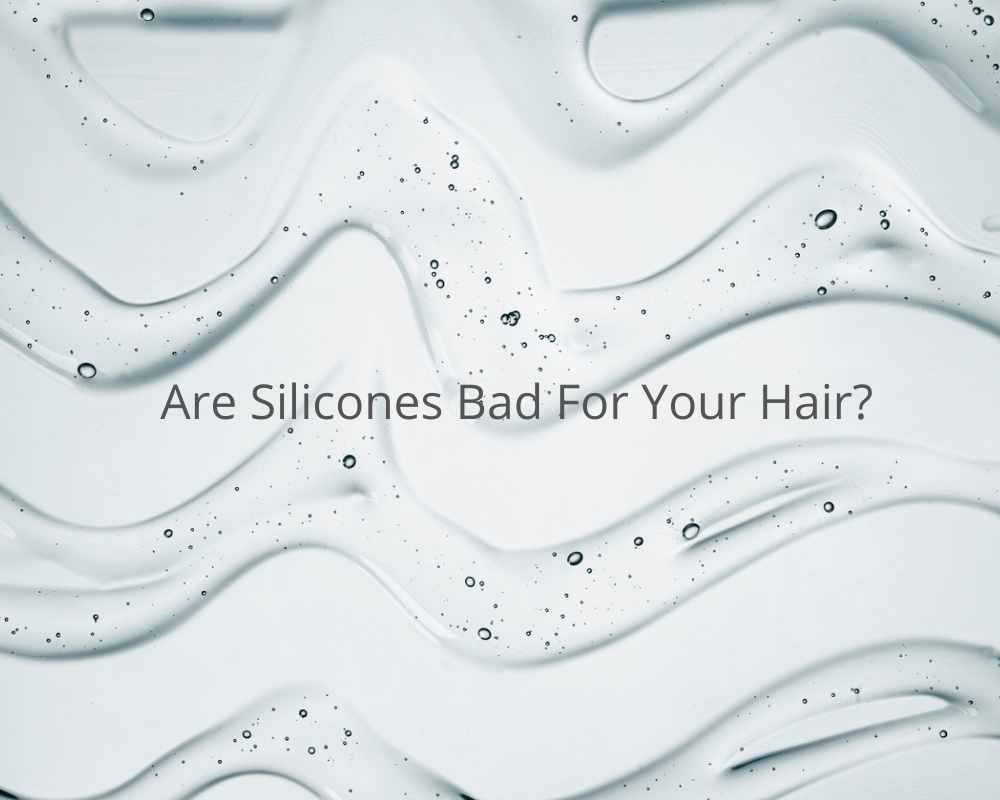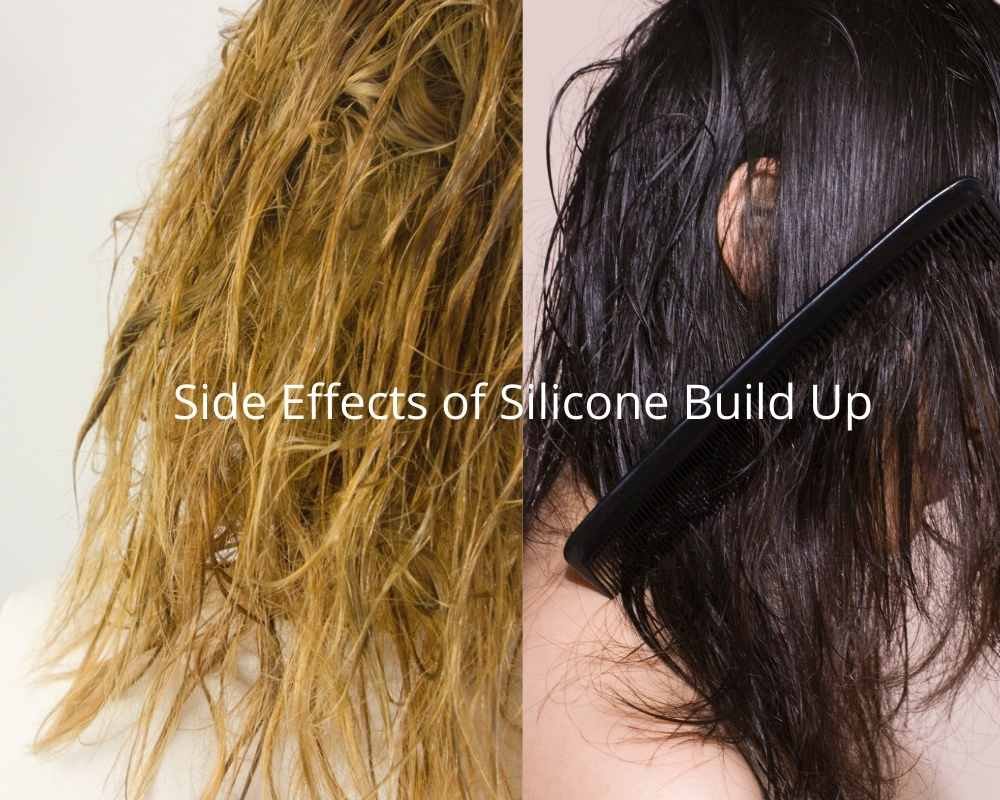How To Reverse Silicone Build Up and Make Your Hair Care More Effective
Is Silicone Buildup to Blame for Your Dull, Stringy Hair?
By Katie Muirhead
Updated on June 24th, 2023
In the world of hair care, silicones can be both a friend and an enemy, producing results that range from sleek and shiny to dull and dry. Because of its ability to reduce the appearance of frizz and provide rapid shine to the hair, this component is frequently included in a wide variety of hair care products. Nevertheless, with time, silicone can build up and sit on the hair, making the hair appear lifeless and preventing moisture from accessing the strands. Silicone can also produce buildup on the scalp and interfere with our healthy hair growth cycle.
Do not rush into throwing out all of your products just yet, despite the fact that it may be tempting to fully avoid silicone altogether. Frizz-fighting, heat protection, and quick shine enhancement are just a few of the many benefits that may come from using silicones on your hair. Yet, over time, silicones can have an effect on your hair that is less than desirable. Also, in comparison to their non-soluble counterparts, water-soluble silicones provide a significantly lower risk to the long-term health of your hair.
What Are Silicones?
Silicones are a type of polymer that, when used in hair care products, confer a number of desirable effects on the hair, including improvements to both its appearance and its texture. The bound polymer chains are located on the surface of the hair, and their presence has an effect on how light is reflected, refracted, scattered, and absorbed by the hair. In other words, they determine how shiny and healthy the hair appears.
In order for silicones to be suitable for use in hair care products, they must first be extracted from natural sources such as crystal quartz or sand, and then they must be refined in a laboratory. Non-soluble, water-soluble, and evaporating silicones are the three varieties of silicones that can be found in hair care products. In general, non-soluble silicones are the ones that are the most difficult to remove from the hair and are also the most likely to be the cause of silicone buildup on the hair.
What Does Silicone Build Up Look Like?
Have you ever been looking forward to wash day, only to find that after you shower, your hair is still unmanageable and without any luster? This is one of the most common symptoms of silicone buildup. Silicones can be an excellent short fix to manage frizz, but if you use them for an extended period of time, they can overwhelm your hair, leaving it looking greasy, dull, and lifeless.
Even after taking a shower, some people still experience feeling as though their hair is dirty, which can encourage them to develop the unhealthy practice of over-washing their hair. Shampooing your hair an excessive amount can cause it to get dehydrated, which can then lead to tangles and ultimately breakage. Because silicone buildup is removed, shampoo is able to function more effectively on the hair, and as a result, you will actually need to shampoo your hair less frequently overall.
In addition, we are aware that having a healthy scalp is essential to having healthy hair and that the hygiene and balance of your scalp may be negatively impacted by the accumulation of silicone. An accumulation of silicone can lead to blocked pores, lumps, and sensitivity on the scalp, all of which can result in flaking, dandruff, and itching. While your scalp attempts to "breathe" through the silicone accumulation, your roots may become either extremely dry or excessively oily, depending on how your scalp reacts to the silicone.
4 Ways To Efficiently Remove & Prevent Silicone Build Up
If you use hair care products that include silicone, as do more than half of the products now available on the market, it is essential that you are aware of the signs of silicone buildup and are knowledgeable of how to effectively remove the extra silicone from your hair.
1. Quick Fix: Clarifying Shampoo
If it is your first time using this type of shampoo and you have colored or bleached hair, hair extensions, keratin or highly porous hair, proceed with caution when using a clarifying shampoo. Alternatively, go to a hair salon for professional advice or to have your clarifying shampoo service done by an expert. After all, by definition, clarifying formulas have a detergent concentration ratio more than traditional. The average person should clarify no more than once or twice a month. Even if you choose the sulfate-free version, overuse of clarifying shampoos can strip the scalp of the essential oils that keep hair healthy.
The process of removing silicone buildup can leave your scalp out of balance - your scalp may start producing more oil to try and compensate for the suddenly cleansed hair and pores. A great method to help balance a sensitized scalp is to use a treatment such as the MAY11 Purifying Scalp Oil. This silicone-free, all natural formula contains organic ingredients such as Evening Primrose Oil, Castor Oil, Rosemary and Chamomile essential oils to help cleanse the scalp and soothe any inflammation. Plus, it is a great protective and moisturizing treatment to use before a clarifying shampoo.
2. A Natural Way: ACV Hair Wipe
Apple cider vinegar, a convenient pantry staple, is able to remove clumpy residue and gunk in the hair from product buildup, and also works as a natural detangler. The vinegar works by closing the cuticle of the hair, increasing light reflection and shine.
ACV applied directly to the hair, however, can be harsh. Here is our preferred technique to use ACV safely and efficiently. It can be used before shampoo, or rinse-free between washes:
Before shampooing, brush, comb or detangle your hair
In a small bucket add 1 cup of ACV in 1 gallon of lukewarm water
Soak a thin cotton towel and squeeze just enough out to avoid dripping
Divide your hair into 4-6 sections and wipe your hair from root to tip. Repeat 1-3 times on each section
Rinse your hair and head by pouring the leftover ACV and water
Let it drip for 1 minute and proceed to shampoo as usual
3. Game Changer: Comb Your Conditioner
Distributing your conditioner using a brush or comb with medium or fine teeth, you can help collect any extra product, which ensures that you are only leaving the required quantity of product throughout the lengths of the hair, so preventing product buildup. Bounce and volume can also be supported by using the appropriate quantity of product and distributing it evenly.
4 . Make the Switch! Go Silicone-Free!
As it can take up to 5 shampoo cycles to completely remove silicone build up from your hair, it is important to prevent more from being added to your hair and scalp. Start to introduce and explore 2-3 silicone-free hair care product options, such as shampoo, conditioner and hair treatments to your routine. This way, you will build the foundation for a healthy hair care routine, while still enjoying the benefits of silicone styling products.
Water-Soluble vs. Non-Soluble Silicones
In addition, we have some positive news to share: not all silicones are bad. Many formulations used water-soluble silicones to mitigate the negative effects of silicone in hair care products while limiting its indirect effects.
Remember, it’s in the name: water-soluble silicones are much easier to wash out than non-soluble silicones. When examining your hair care products, here are some common silicones to look out for:
Water-Soluble Silicones (Will not buildup on hair & can be washed out with just water)
Stearoxy dimethicone
Dimethicone copolyol
Dimethicone PEG-8 phosphate
PEG-7 amodimethicone
Non-Water-Soluble Silicones (Will build up on hair & need a sulfate shampoo to be washed out)
Dimethicone
Cetyl dimethicone
Cetearyl methicone
Dimethiconol
Stearyl dimethicone
Cyclomethicone
Amodimethicone
Trimethylsilylamodimethicone
Cyclopentasiloxane
There is a lot of fear mongering surrounding silicone in hair products, only some of which is warranted. Now, you should be able to understand the purpose and benefits of silicone in your hair care routine, the different types of silicones in hair products, and how to use this ingredient to improve the look and feel of your hair. When used correctly, you can avoid silicone build up and maintain your hair’s volume and bounce. Goodbye, stringy, lifeless hair… hello, luscious locks!
Any questions? Connect with an expert









